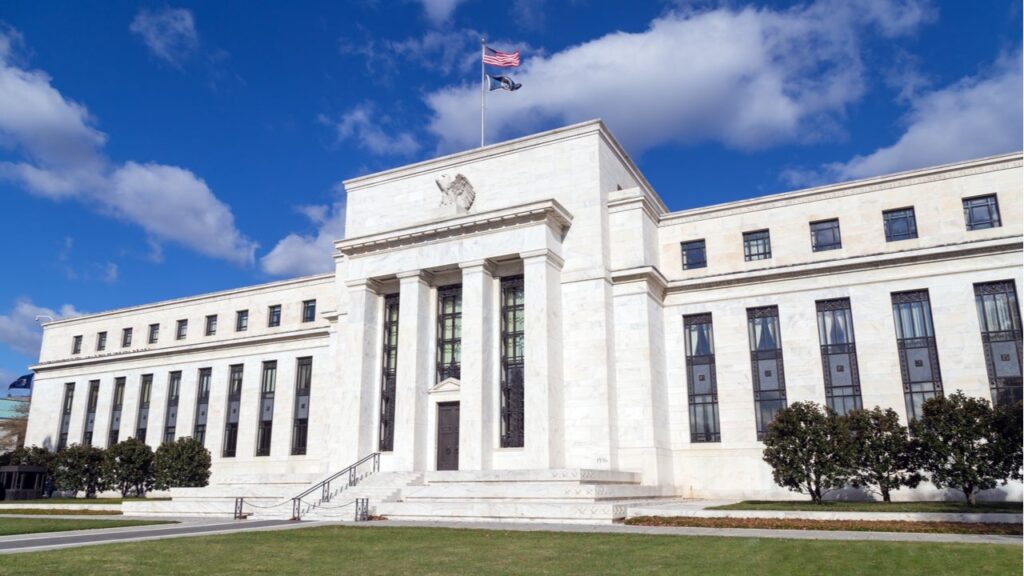Key takeaways
- Decisions made by the Federal Reserve to increase the benchmark rate do not directly impact auto loans but rather the cost for banks to lend.
- The higher the Fed sets rates, the higher the auto loan rates you receive will likely be.
- In September, the Fed made its first rate cut in four years, and economists expect more cuts into 2025.
The Federal Reserve is a complex facet of the American economic system. The Fed determines how much it costs to borrow money at its eight or so meetings per year. One of its jobs is setting a benchmark interest rate for short-term consumer lending, which private lenders use to set their own rates. When the federal funds target rate is high, as it is now, you can expect to pay more for a personal or auto loan.
How Fed rates affect auto loans
Auto loan rates are dictated by the time of year, the type of vehicle, the borrower’s credit score and more. But the Fed sets the benchmark rate on which auto loan lenders base their rates.
The choices discussed by the Federal Open Market Committee (FOMC) during Fed meetings are not the exact interest rates consumers will be offered; rather, they impact the cost for banks to lend to each other. Because of this, banks and lenders may change the rates they offer to consumers when the federal funds rate changes. When the Fed raises interest rates, auto loan rates may rise as well, or vice versa.
September Fed meeting
In the September 17-18 meeting, the Federal Open Market Committee announced that it is lowering interest rates, its first adjustment since July 2023 and first cut in four years. The FOMC had increased rates a total of 11 times during the most recent economic cycle in an effort to tamp down inflation. But now, with inflation falling to 2.5 percent in August, the Central Bank opted to lower rates instead. The target range dropped 50 basis points and is now 4.75-5.0 percent.
However, this number does not control auto rates directly. Rather, it is tied to the prime rate. The 11 rate increases since the beginning of 2022 mean that vehicle financing could cost you more money.
Why Fed meetings are important
Fed meetings are important because they allow anyone to have a transparent look into the economy — more specifically, the way interest rates change and are expected to shift. If the Fed announces that it is raising interest rates, you can expect to encounter more expensive loans or see interest rates rise on any variable-rate loans you already have.
September’s rate cut indicates that the FOMC believes its rate hikes have had the desired effect. It may also foreshadow lower interest rates on consumer loans in the future. However, it will take more cuts for borrowers to see any meaningful change in their cost to borrow.
Check out Bankrate’s Federal reserve hub to see how the FOMC could impact you and your money.
How to prepare for future Fed rate changes
Preparation is the key to saving money. To be best prepared, educate yourself on the current federal funds rate and how shifting rates may impact your wallet. The federal funds rate and auto loan rates aren’t the same, but a domino effect reaches the lenders, which then affects your rates.
Although the current federal funds rate dictates the general range of auto loan rates available, your credit score is the primary factor in determining the amount you pay. To receive a loan with the most favorable terms, you must have a prime credit score, typically 660 and above, and good credit history. The federal funds rate is out of your control, but you can improve your credit score to prepare for future vehicle financing.
Next steps
When the Fed adjusts rates, available auto loan rates may also change. Although the Fed’s decisions impact your auto loan, the rate you will receive is primarily determined by your financial history.
Regardless of how the federal funds rate changes, set yourself up for the best auto loan rate by working to improve your credit score and finances. It’s also good to keep up to date on current loan rates before applying for a new auto loan.
Read the full article here


